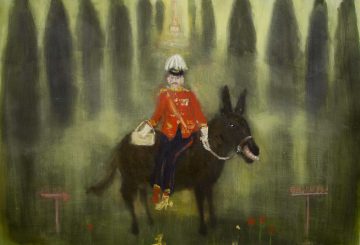Beating up on curators is like being a school bully. They are the weakest members of the art world with few friends, lots of enemies and hardly anyone who really understands what they do.
The Art Life, as a rule, thinks that the curatorial profession is misunderstood. We think that way because, if a show is done well, it seems self evident. You walk away from a show thinking it was really good and further, of course, it had to be that way didn’t it?
A bad show, on the other hand, seems clearly the fault of someone – firstly the artists cop the blame, and then it’s the curators. What were they thinking?
There have been some stinkers in Sydney over the last few years, but let’s not get into bagging them now. It’s all water under the bridge.
The funny thing about curatorial practice is that, in many ways, it ends up being irrelevant to the punters who go to the shows.
People like the work of Tracey Moffatt (for example). All her work was in one place at the MCA and you could go and see it. Who cares that much about how it was put together, or the logical (or illogical) progression from one series of works to the next? We also remember having a go at MCA curator Rachel Kent for the sheer conceptual obviousness of her Japanese show a few years back and yet, when we got down to the show and had a look at the work, we had completely forgotten about the hackneyed theme of “the city”. We were just glad to see a bunch of good art in one place.
We are very much of the school that thinks a show of recent works by artists unencumbered by an artificially concocted theme is the best way to go. The 2000 Sydney Biennale was the best example of how that approach can work.
The Biennale is a special case of course, being an experimental hot house where an idea, no matter how far out it seems, gets a go. How else can you explain crap Biennales of the 1990s like Boundary Riders, Every Day and, our anti-favourite, Jurassic Technologies Revenant? Richard Grayson’s (The World May Be) Fantastic was a throw back to earlier curatorial strategies, but it was so eccentric you were more inclined to forgive its formal repetitions than shows where you couldn’t even understand the titles, let alone the art in the shows.
Last month, the artists for the 2004 Biennale of Sydney were announced to the media and were sent out along with a page or two by curator Isabel Carlos explaining what the show will be about:
The theme, On Reason and Emotion, emerged from my reading of a thought-provoking book called “Descartes’ Error” by António Damásio. Damásio analyses a number of neurological case studies to show that emotion is crucial to human intelligence. Rather than the restrictions of the traditional “cogito” (I think, therefore I am), one can now say “I feel, therefore I am”.
Another point of departure was considering Australia as one of the southern-most continents. As a European, I have certain associations when I think of Southern cultures, and usually we connect the South with emotion, yet I have discovered Australia has much in common with the Anglo-Celtic culture of the North.
We don’t know about you, but we feel weird about European artists talking about us Southerners like that, behind our backs and, what’s more, making pretty sweeping statements about our emotional lives! For all of us who are not Anglo-Celtic, perhaps, it might even be considered completely inaccurate. But hey, everyone is entitled to their opinion and it’s good to see that Carlos has done some reading.
In the end, however, we suspect that the theme of On Reason and Emotion for this up-coming Biennale will be pretty irrelevant once you’ve dragged yourself all over town to see the art. You’ll barely remember who António Damásio is, let alone what relevance his neurological case studies have to do with the work of Joan Grounds, you’ll just remember if you liked the art or not.
Speaking of Joan Grounds, the Australian artists announced for the Biennale are an interesting lot – people who have been (mostly) untroubled by large scale institutions and exhibitions: Pat Brassington, Carolyn Eskdale, Joan Grounds & Sherre DeLys, Gordon Hookey, Derek Kreckler and Susan Norrie. If nothing else, the 2004 Biennale will give some Australian artists the chance to rub shoulders with international artists of similar (or lesser) stature to themselves.

